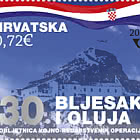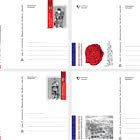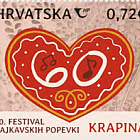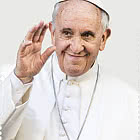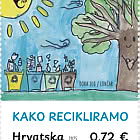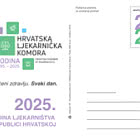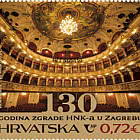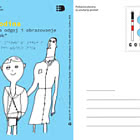Motif: a figure of Ruđer Bošković (portrait by the painter R. E. Pine during Bošković’s visit to London (the painting is housed in the Franciscan monastery in Dubrovnik) and the drawing of the reconstruction of the dome of St. Peter’s Church in Vatican. Croatian Post has issued this commemorative stamp as a joint issue with Vatican Post. Josip Ruđer Bošković, Croatian scientist - physicist, mathematician, astronomer, geodesist, engineer, poet, philosopher and diplomat was born in Dubrovnik on 18 May 1711 and died from pneumonia in Milan on 13 February 1787, where he was buried in the church of Santa Maria Podone. He is considered one of the world’s most prominent scientists of the time. From the pages of the book Theoria philosophiae naturalis by Ruđer Bošković, first published in Vienna in 1758, originates the spirit of European and Croatian new ages. In the lifework of the son of Dubrovnik, Ruđer Bošković, who worked in Rome and Milan and was celebrated in Paris and London, for the first time the revolutionary idea on interaction of visible and invisible worlds is exposed. Combining the theses by Newton and Leibniz, Ruđer Bošković managed to prove by his mathematical calculations that on the level of matter there exist invisible particles that helped by attracting and repelling forces produce huge and hard to control energy. Ruđer Bošković thus was the first to unfold the membrane of molecules and atoms and to expose to human eye by then invisible worlds. .Although his theories were esteemed already in his time, their full value has been recognized only in present time. Bošković has anticipated ideas that were ahead of his time. Bošković was born in a Dubrovnik middle-class family in 1711. Upon accomplished education at Dubrovnik Jesuit Collegium he continued his study in Rome. Already at the age of 25 he started publishing scientific discussions in the field of mathematics, astronomy and physics. He is well known also as the researcher of practical problems in building and thus successfully solved the problem of cracks in the wall of St. Peter’s Church in Rome. He did not visit his native town often, so his only real trace in Dubrovnik today is his heart immured in the Cathedral wall. Bošković is also the author of a series of literary works. In 1760 he finished his Latin epic (On the Eclipses of Sun and Moon - O pomračinama Sunca i Mjeseca), he wrote also a very good and much read Diary of the Journey from Constantinople to Poland (Dnevnik s putovanja od Carigrada do Poljske) and in an epistle from 1779 this one-time Jesuit cheered the independency of American people. For some time he was obsessed with the idea to go to the New World but in the end did not travel further to the west than London. Legendary are the anecdotes about his stays in Paris and London and about his meetings with scientists there. He was the author of a rich but badly preserved epistle collection containing political and diplomatic letters but also his private correspondence with his sister Anica. In this epistle collection a number of warm and sharp-witted writings by the mathematician’s sister are preserved. For that sister Ruđer Bošković published in 1758 in Venice a Pastoral Conversation. His entirely original theory on the interaction of atoms marks the beginning of modern nuclear physics but also of completely new views on man’s position on Earth and his destiny in universe. The idea that the arrangement of universe has got its counterpart in each earth molecule, that small parts - atoms are connected by invisible forces that can be expressed in mathematical formulas, has essentially exceeded by that time ruling Newtonian mechanistic physics. The universe, but also human soul, after Bošković could be more easily experienced as self sufficient mechanisms, as separate systems of matter that move without any direct God’s interference. It is therefore not illogical that he was elected the head of the famous astronomical observatory in Brera, but it is equally so logical that he was obstructed in doing his job. Due to these conflicts his health condition deteriorated so that he withdrew from that position to live in a quite Italian town of Bassano where he finished five bands of his masterpiece on optics. He died in Milan and his only remnant in his native town is his heart immured in the wall of Dubrovnik Cathedral. Ruđer Bošković had taken a deep insight into the world’s interior; he looked at it there where its secret by that time rested fully unnoticeable. In the time of Ruđer Bošković first flying machines were constructed, first balloons flew up into the sky. The secret did not rest any more in heaven. Now it has become easier for the people of new ages to radically peep into human sensitivity, to start digging into his irrational and dreamlike nature. Slobodan Prosperov Novak








